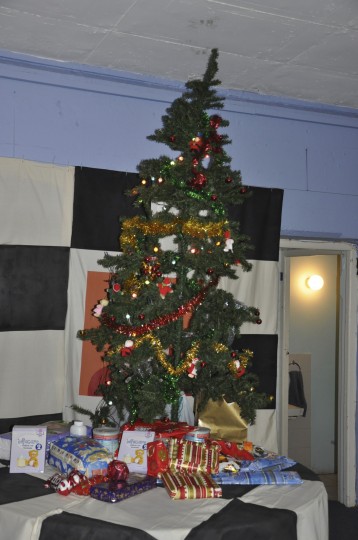Ok so this is a bit late, and if you haven’t done your Christmas, Hannukah and Festivus shopping yet, shame on you. Or just shame. Most of these ideas don’t entail going to a mall and having your personal space invaded by ten thousand hormonal adolescents. You can order online, or make a phone call or two. Get going!

Books
For the reader, you could check out our book reviews, arranged by topic:
- Children’s books
- Conservation
- Dive travel
- Diving adventures
- Diving history
- Diving science and physiology
- Extreme diving
- Fish identification
- Marine biology
- Marine outposts and shipping
- Oceanography and ocean history
- Photography
- Sharks
- Ships and shipwrecks
I’m not going to suggest a magazine subscription – I’ve let most of ours lapse as we seem to have entered a long dark teatime of the soul when it comes to South African diving magazines. If the quality picks up, they’ll be back on the gift list at the end of 2014.
Dive gear
Check out What’s in My Dive Bag for some ideas… You can contact Andre for most of these:
- torch
- gloves
- snorkeling gear – mask, fins, snorkel
- fins
- hoodie
- SMB – no Cape Town diver should be without one!
- strobes
- signalling devices
- a knife – contact Monty for the awesome Eezycut Emergency Cutting Tool
- logbook
- slates
- a new logbook
Make sure you know the returns/exchanges policy of wherever you make your purchases. Some places can be difficult, and if the mask doesn’t fit it’s no good at all!
For lady divers
For the diving lady in your life (or your man friend with too much hair), what about some rich hair conditioner to apply before going in the water? Suggestions here. A pack of cheap, soft fabric elasticated hairbands is a good stocking filler.
Some high SPF, waterproof sunscreen, or a nice hooded towel for grown ups (available in one or two of the surf shops in Muizenberg) would also not go amiss.
Experiences
Don’t forget to add a memory card for the lucky recipient’s camera if you plan to gift any of these! Contact Tony for prices.
- Discover Scuba Diving (or Seal Team, for under tens)
- Refresher
- a well-chosen Specialty course
- voucher for a boat dive or two on Seahorse
- a dive at the Two Oceans Aquarium
For the non diver, you could inspire a love for our oceans with one of these:
- a seal snorkeling trip
- a whale watching trip in False Bay
- shark cage diving in False Bay
- shark cage diving in Gansbaai
- membership at the Two Oceans Aquarium
For those who need (or like) to relax
Memberships
- DAN cover (for the year or for a dive trip)
- Membership to one of the local dive clubs: Cape Scuba Club, FBUC, OMSAC…
Wall art
Clip Clop designs and prints beautiful tide charts for Cape Town and Durban and moon phase charts for the year. You can order online or usually find them at Exclusive Books.
My underwater alphabet is available for R200 in A1 size, fully laminated. Shout if you want a copy.
If you take your own photos, you could print and frame a couple, or experiment with stretched canvas prints if that’s your thing. A digital photo frame pre-loaded with underwater images is also a lovely gift for a diving friend.
Donations
For the person who has everything, or because you’re feeling grateful:

















